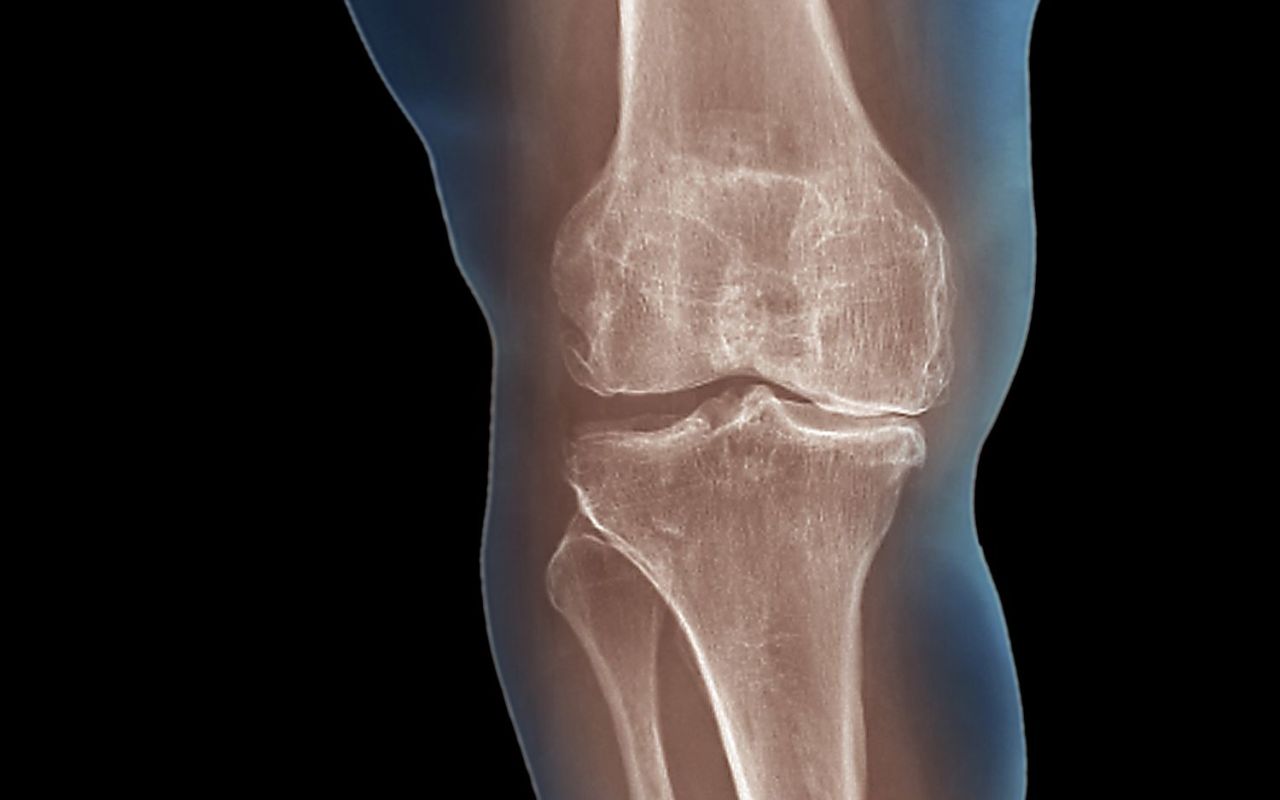How NAD+ Can Influence Arthritis and Support Better Joint Health

Arthritis is a debilitating condition that affects millions of people worldwide.
Over the years, extensive research has been conducted to understand better the underlying causes and potential treatments for this chronic condition.
One emerging area of interest is the link between nicotinamide adenine dinucleotide, commonly known as NAD+, and arthritis.
This article will explore the role of NAD+ in the body, its connection to arthritis, the science behind this relationship, potential therapeutic applications, and debunk common myths surrounding NAD+ and arthritis.
In this article, we talk about…
- The intriguing connection between NAD+ and arthritis, and how this molecule could play a crucial role in managing the condition.
- How NAD+ might influence the development and progression of arthritis, potentially offering new avenues for treatment.
- The potential therapeutic benefits of NAD+ for relieving arthritis pain and improving joint health.
- Common misconceptions and uncover the truth about NAD+ and its role in arthritis care.
Boost your NAD levels to optimize your health and longevity. Get an exclusive 20% OFF today by using code Blog20. Click here to order.
What is NAD+?
NAD+ is a coenzyme found in all living cells. It plays a critical role in various biological processes, particularly in energy metabolism. This molecule is involved in the transfer of electrons during cellular respiration, the process through which cells convert nutrients into energy.
Additionally, NAD+ is also essential for DNA repair, gene expression, and maintaining the overall health of cells.
When it comes to energy metabolism, NAD+ acts as a key regulator. It participates in redox reactions, which involve the transfer of electrons from one molecule to another.
This electron transfer is crucial for the production of ATP, the main energy currency of cells. NAD+ acts as an electron carrier, shuttling electrons between different metabolic pathways to ensure efficient energy production.
Moreover, NAD+ is involved in signaling pathways that regulate various cellular processes. One of the most well-known pathways is the sirtuin pathway, which is controlled by enzymes known as sirtuins.
These enzymes rely on NAD+ as a cofactor to carry out their functions. Sirtuins play a role in regulating aging, stress response, inflammation, and other important cellular processes.
The Role of NAD+ in the Body
“Nicotinamide adenine dinucleotide (NAD) pharmacology is a promising class of treatments for age-related conditions that are likely to have a favorable side effect profile for human use….”
National Institutes of Health, Published September 15, 2020
NAD+ serves as a key player in cellular functions such as redox reactions and signaling pathways. It acts as a cofactor for various enzymes, including sirtuins, which are involved in regulating cellular processes such as aging, stress response, and inflammation.
Furthermore, NAD+ is responsible for maintaining the balance between oxidative stress and antioxidant defense systems within cells, which is crucial for overall cellular health and homeostasis.
One of the important functions of NAD+ is its involvement in DNA repair. DNA damage can occur due to various factors such as exposure to radiation, chemicals, or even normal cellular processes.
NAD+ plays a critical role in repairing this damage, ensuring the integrity of the genetic material and preventing the accumulation of mutations that could lead to diseases such as cancer.
Moreover, NAD+ is involved in gene expression, the process by which information encoded in DNA is used to synthesize proteins.
It acts as a regulator, influencing the activity of proteins that control gene expression. By modulating gene expression, NAD+ can profoundly impact cellular functions and overall health.
The Biological Importance of NAD+
Beyond its role in cellular metabolism, NAD+ has garnered significant attention for its involvement in age-related diseases, such as arthritis.
Researchers have discovered that NAD+ levels decline with age, impairing cellular functions and contributing to the development of various age-related conditions, including arthritis.
Understanding the link between NAD+ and arthritis could potentially open up new avenues for therapeutic interventions aimed at preserving NAD+ levels and mitigating the progression of this chronic condition.
Furthermore, NAD+ has been implicated in other age-related conditions,1 such as neurodegenerative diseases.
Studies have shown that boosting NAD+ levels can have beneficial effects on neuronal health and function, potentially offering new strategies for the treatment of conditions like Alzheimer’s and Parkinson’s disease.
Additionally, NAD+ has been linked to the regulation of circadian rhythms, the internal biological clocks that govern various physiological processes.
Disruptions in circadian rhythms have been associated with an increased risk of metabolic disorders, cardiovascular diseases, and even certain types of cancer. By modulating NAD plus levels, it may be possible to influence circadian rhythms and promote overall health.

The Connection Between NAD+ and Arthritis
Researchers have observed that NAD+ depletion contributes to the loss of cartilage, inflammation, and overall joint dysfunction – all hallmark characteristics of arthritis. NAD+ is a vital molecule involved in numerous cellular processes, including energy production and DNA repair.
How NAD+ Affects Arthritis Development
NAD+ depletion leads to a decline in the activity of sirtuins, a class of proteins that play a crucial role in maintaining cellular health. These sirtuins are responsible for regulating various biological pathways, including inflammation, oxidative stress, and DNA repair.
When NAD+ levels decline, sirtuin activity decreases, resulting in increased inflammation2, oxidative stress, and impaired cartilage regeneration. These factors collectively contribute to the development and progression of arthritis.
Furthermore, NAD decline has been associated with increased production of inflammatory mediators, such as interleukins and tumor necrosis factor-alpha (TNF-α). These molecules further fuel joint inflammation and tissue damage, exacerbating the symptoms of arthritis.
The Impact of NAD+ Levels on Arthritis Symptoms
Emerging evidence suggests that restoring NAD+ levels in arthritis patients may hold promise in alleviating symptoms and slowing disease progression. Increased NAD+ availability has been shown to suppress inflammation, promote cartilage repair, and improve overall joint function.
By replenishing NAD+ levels, it is possible to enhance the activity of sirtuins, which in turn helps regulate inflammatory processes, reduce oxidative stress, and support cartilage regeneration. This comprehensive approach can potentially mitigate the symptoms experienced by individuals with arthritis.
Furthermore, higher NAD+ levels have been associated with reduced pain and improved quality of life for individuals with arthritis.
The alleviation of pain and improvement in joint function can significantly enhance the daily lives of those affected by this debilitating condition.
The Science Behind NAD+ and Arthritis
Recent research findings shed light on the molecular mechanisms underlying the intricate relationship between NAD+ and arthritis. Understanding these mechanisms is critical for developing targeted therapeutic approaches.
Arthritis is a complex and debilitating condition that affects millions of people worldwide. It is characterized by inflammation and damage to the joints, leading to pain, stiffness, and reduced mobility.
While the exact causes of arthritis are still not fully understood, scientists have made significant progress in unraveling the role of NAD+ in this disease.
Recent Research Findings
Scientists have discovered that NAD+ plays a crucial role in modulating the activity of certain enzymes and signaling pathways involved in arthritis pathogenesis.
For example, boosting NAD+ levels has been found to inhibit the activity of nuclear factor-kappa B (NF-κB), a key regulator of inflammation.
NF-κB is known to promote the production of pro-inflammatory molecules, such as cytokines and chemokines, which contribute to the chronic inflammation seen in arthritis. By inhibiting NF-κB, NAD+ helps to reduce this inflammatory response, providing relief to arthritis patients.
Additionally, studies have also highlighted the potential of NAD+ supplementation in reducing oxidative stress, improving mitochondrial function, and promoting cell survival in arthritis models.
Oxidative stress is a condition characterized by an imbalance between the production of reactive oxygen species (ROS) and the body’s ability to detoxify them. This imbalance can lead to tissue damage and inflammation, both of which are hallmarks of arthritis.
By enhancing mitochondrial function, NAD+ supplementation helps to improve energy production within cells, which is often impaired in arthritis. This can lead to better overall cellular health and improved tissue repair.
The Molecular Mechanisms Involved
One of the primary mechanisms through which NAD+ influences arthritis is by regulating the activity of sirtuins.
Sirtuins are a family of proteins that play a crucial role in various cellular processes, including inflammation, metabolism, and aging.
By activating sirtuins, NAD+ promotes anti-inflammatory processes, suppresses cartilage degradation, and enhances tissue repair.
These effects are mediated through the deacetylation of specific target proteins, which helps to restore their normal function and prevent further damage to the joints.
Moreover, the NAD+/sirtuin axis interacts with other cellular pathways, such as the mammalian target of the rapamycin (mTOR) pathway, which is involved in cell growth and aging.
The mTOR pathway regulates protein synthesis and cell proliferation, and its dysregulation has been implicated in various age-related diseases, including arthritis.
Manipulating these intricate networks holds promise for potential therapeutic interventions. Researchers are exploring various strategies to boost NAD+ levels and activate sirtuins, including the use of NMNs and sirtuin-activating compounds.
These approaches aim to restore the balance between inflammation and tissue repair, offering hope for more effective treatments for arthritis.
Potential Therapeutic Applications of NAD+ for Arthritis
The knowledge gained regarding the connection between NAD+ and arthritis opens up exciting possibilities for potential therapeutic applications.
NAD+ Supplementation and Arthritis
Supplementing with NMNs, such as nicotinamide riboside (NR), has shown promise in increasing NAD+ levels and improving arthritis outcomes.
NR supplementation has been demonstrated to reduce joint inflammation, protect cartilage from degradation, and improve overall joint function in preclinical arthritis models.
Human clinical trials are underway to further investigate the efficacy and safety of NAD+ supplementation in arthritis patients.
Future Directions in NAD+ and Arthritis Research
As the understanding of the link between NAD plus and arthritis continues to expand, future research efforts are focused on unraveling the precise mechanisms involved and developing targeted interventions.
Scientists are investigating the potential of novel NAD+ boosting compounds, exploring combination therapies, and aiming to identify specific molecular targets within the NAD+ pathway for therapeutic purposes.
Debunking Common Myths about NAD+ and Arthritis
Despite the promising findings surrounding NAD+ and arthritis, some misconceptions need clarification.
Misconceptions about NAD+ Supplementation
One common myth is that NAD+ supplementation alone can completely cure arthritis.
While NAD+ supplementation shows potential for alleviating symptoms and slowing disease progression, it is important to approach treatment holistically and consider it as part of a comprehensive management plan.
Furthermore, it is crucial to consult with healthcare professionals and follow evidence-based guidelines when considering NAD+ supplementation or any other treatment option.
Clarifying the Role of NAD+ in Arthritis
Another misconception is that NAD+ depletion is solely responsible for arthritis development. While NAD+ decline plays a significant role, arthritis is a complex condition influenced by multiple factors, including genetics, lifestyle, and environmental factors.
Understanding the role of NAD+ in arthritis is just one piece of the puzzle and should be viewed in the context of the broader pathophysiology of the disease.
Conclusion
In conclusion, the link between NAD+ and arthritis provides valuable insights into the pathogenesis and potential therapeutic approaches for this chronic condition.
NAD+ depletion contributes to the development and progression of arthritis through various molecular mechanisms, including inflammation and oxidative stress.
Restoring NAD+ levels through supplementation like Vitality Boost can help improve arthritis symptoms, protect cartilage, and preserve joint function.
However, further research is needed to fully understand the intricacies of this relationship and develop targeted interventions that can positively impact the lives of individuals living with arthritis.
Boost your NAD levels to optimize your health and longevity. Get an exclusive 20% OFF today by using code Blog20. Click here to order.




